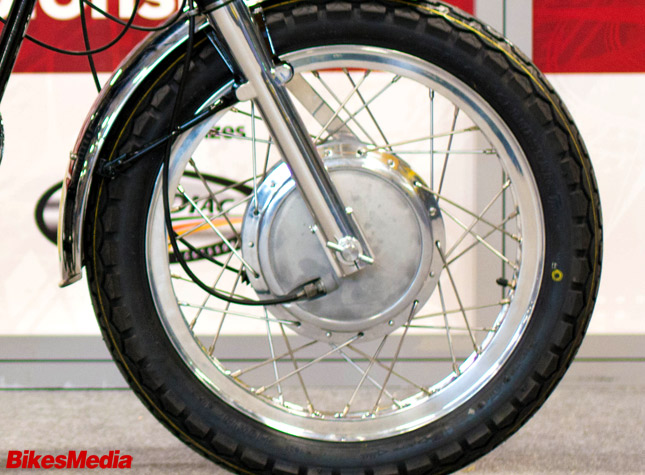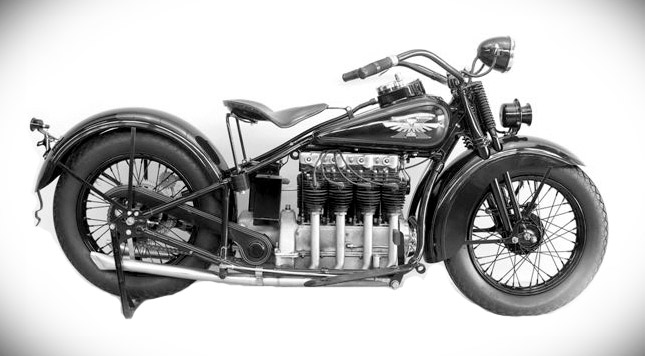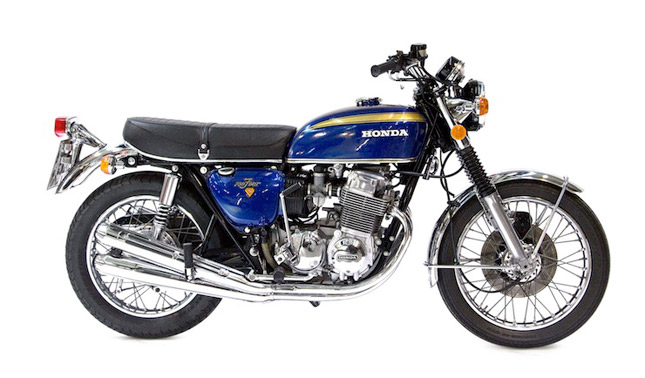Motorcycles in their early days stood true to the literal definition of their name which was essentially a cycle with a motor attached to it. The bike barely had any other machinery on board and not even a set of brakes. You had to put your foot down or slow down the motorbike in order to make it come to a stop.
Imagine that scenario today where the rider of a CBR 1000RR Fireblade has to put his foot down at every corner to lean or turn, doesn’t sound very pretty does it. So let’s take a moment to appreciate how far the technology and the engineering in our motorcycle has come which has enabled us to travel beyond the speeds which we couldn’t even comprehend when we first sat on a saddle. Early Drum Brakes and The Henderson Motorcycle Co.
Early Drum Brakes and The Henderson Motorcycle Co.
The first brakes ever installed on a motorcycle were by a company known as 'Steffey Motorcycles' of Philadelphia in 1902. The system was very simple, at the front wheel a steel plate was used which slowed down the bike by rubbing itself on them. This system was similar to that which you can find on cycles. The Steffey Motorcycle which was used in this case had a Hartford bicycle frame and the bike was powered by a smaller capacity engine.
RELATED ARTICLE: Mechanism Of Motorcycle Drum Brakes Explained
After this, the motorbike manufacturers started installing more powerful engines in their motorcycles so they knew they had to stop pretty quickly too. So they did it by using a simple front shoe brake. Its design was simple and was cheap to produce its still in use today. In those early days, a new motorcycle company rose, its name was Henderson motorcycle; it was founded by two brothers, Tom and William Henderson. The factory was located in Detroit, USA. and the brothers produced motorcycles from 1912 to 1931.
These guys produced a dozen of motorcycles and came to be known as a company whose motorcycles were the fastest of that time. There was one particular model which was a reflection of how the motorcycles in the future will be, it was Model “K” also known as Henderson “KJ”. The bike was way ahead of its time and featured specs like a 1000cc 4 cylinder engine with 40 horse power. The bike was the redesigned work of company’s former employee Arthur Constantine, who left Henderson MC in 1928.
This motorcycle did a top speed of 160 kilometers per hour more than 80 years ago that’s no mean feat. The bike had drum brakes both at the front and at the back. The working of drum brakes was very simple and effective. It was also a giant leap from early “Cycle like” brakes. The braking setup consisted of a drum which was mounted onto the wheel. The overall mechanism of the drum brakes remains the same even today with only a few minor upgrades.
RELATED ARTICLE: Effective Motorcycle Braking Techniques
The drum consists of brake pads which are placed adjacent to the drum walls opposite to each other and in between the drum there is a piston cylinder device connected to each of the brake pads. When the brakes are applied the piston expands the brake pads against the wall of the cylinder converting kinetic energy into heat and the drum stops your bike. Inside of the drum, there’s usually be a retracting device which would pull the piston back to its original position when the brakes are released.
After that, it wouldn’t be until 1970 when Honda launched CB750 worlds first mass produced bike with disc brakes, which many people considers a four cylinder breakthrough in the motorcycle world. I personally think that Henderson MC already did this in 1930. But that’s a comparison for another time. Final Words:
Final Words:
Our ability to stop has enabled us to go faster than ever before. Bikes today feature a lot of tech and engineering on board to keep the riders safe and every once in a while we must take a look back to realize how great of a genius our forefathers were and how their dreams are now our passion. I would like to end this by referring to an old Christian Larson’s quote “Take pride in how far you have come and had faith in how far you will go”. For all things, awesome stay tuned to BikeMedia.
By: Yetnesh Dubey
Imagine that scenario today where the rider of a CBR 1000RR Fireblade has to put his foot down at every corner to lean or turn, doesn’t sound very pretty does it. So let’s take a moment to appreciate how far the technology and the engineering in our motorcycle has come which has enabled us to travel beyond the speeds which we couldn’t even comprehend when we first sat on a saddle.
 Early Drum Brakes and The Henderson Motorcycle Co.
Early Drum Brakes and The Henderson Motorcycle Co.The first brakes ever installed on a motorcycle were by a company known as 'Steffey Motorcycles' of Philadelphia in 1902. The system was very simple, at the front wheel a steel plate was used which slowed down the bike by rubbing itself on them. This system was similar to that which you can find on cycles. The Steffey Motorcycle which was used in this case had a Hartford bicycle frame and the bike was powered by a smaller capacity engine.
RELATED ARTICLE: Mechanism Of Motorcycle Drum Brakes Explained
After this, the motorbike manufacturers started installing more powerful engines in their motorcycles so they knew they had to stop pretty quickly too. So they did it by using a simple front shoe brake. Its design was simple and was cheap to produce its still in use today. In those early days, a new motorcycle company rose, its name was Henderson motorcycle; it was founded by two brothers, Tom and William Henderson. The factory was located in Detroit, USA. and the brothers produced motorcycles from 1912 to 1931.

*** Henderson KJ 1931 Model
These guys produced a dozen of motorcycles and came to be known as a company whose motorcycles were the fastest of that time. There was one particular model which was a reflection of how the motorcycles in the future will be, it was Model “K” also known as Henderson “KJ”. The bike was way ahead of its time and featured specs like a 1000cc 4 cylinder engine with 40 horse power. The bike was the redesigned work of company’s former employee Arthur Constantine, who left Henderson MC in 1928.
This motorcycle did a top speed of 160 kilometers per hour more than 80 years ago that’s no mean feat. The bike had drum brakes both at the front and at the back. The working of drum brakes was very simple and effective. It was also a giant leap from early “Cycle like” brakes. The braking setup consisted of a drum which was mounted onto the wheel. The overall mechanism of the drum brakes remains the same even today with only a few minor upgrades.
RELATED ARTICLE: Effective Motorcycle Braking Techniques
The drum consists of brake pads which are placed adjacent to the drum walls opposite to each other and in between the drum there is a piston cylinder device connected to each of the brake pads. When the brakes are applied the piston expands the brake pads against the wall of the cylinder converting kinetic energy into heat and the drum stops your bike. Inside of the drum, there’s usually be a retracting device which would pull the piston back to its original position when the brakes are released.
After that, it wouldn’t be until 1970 when Honda launched CB750 worlds first mass produced bike with disc brakes, which many people considers a four cylinder breakthrough in the motorcycle world. I personally think that Henderson MC already did this in 1930. But that’s a comparison for another time.
 Final Words:
Final Words:Our ability to stop has enabled us to go faster than ever before. Bikes today feature a lot of tech and engineering on board to keep the riders safe and every once in a while we must take a look back to realize how great of a genius our forefathers were and how their dreams are now our passion. I would like to end this by referring to an old Christian Larson’s quote “Take pride in how far you have come and had faith in how far you will go”. For all things, awesome stay tuned to BikeMedia.
By: Yetnesh Dubey











